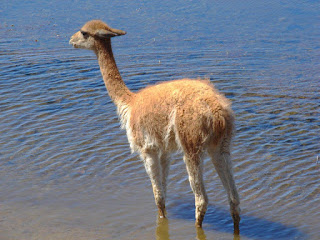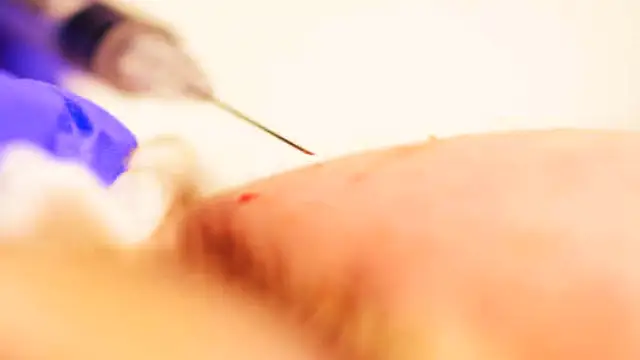nPostednon March 8, 2016
n
n
n
n
nThis fiesta honors a Portuguese man who was a soldier for Spain.nIn 1536, his troop disbanded, and he ended up becoming a shepherd,nbut he had a sort of mid-life crisis, wondering what he should donwith his life. He decided to devote his life to helping people who were sick or poor or both. He established a house in Granada, Spain, to carenfor such people. Because of his good deeds, many people consider Juannthe patron saint of hospitals.
n
n
n
n
n
 Puno,nPeru, celebrates this Portuguese-born Spaniard, even though San Juan denDios never went to the “New World.”
Puno,nPeru, celebrates this Portuguese-born Spaniard, even though San Juan denDios never went to the “New World.” n
n
n
nThe fiesta lasts two days: Yesterday llamas laden withnfirewood made a sort of parade coming into town while people playednflutes and drums. Last night there were huge bonfires. Today is thenactual feast day, and the more formal procession features the saint’snimage being carried all through the town as dancers and musiciansncreate a festival atmosphere.
n
n

n
n
n
n
n
nAnfew months ago, I wrote about Puno, Peru. This city lies between LakenTiticaca and the Andes Mountains, and some people live on floating islandsnin the lake.
n
n
n
n
nSincenllamas are an important part of the fiesta celebrations, and ofnPuno’s economy, I thought I would talk a bit about llamas and theirnrelatives.
n
n
n
n
nOnenof the important ideas of biology is both simple and complex: allnplants and animals and other organisms are related, and they evolvednto survive in specific environments. Llamas and alpacas arendomesticated creatures native to South America; they are most closelynrelated to vicuñasnand guanacos, wild creatures from South America. This entire llamananimal group is most closely related to camels. n
n
n
n
n
nButncamels live in the Middle East and the “Horn of Africa”n(dromedaries, or 1-humped camels) and Central Asia (2-humped camels).nThat’s pretty far from South America – how did these animalnrelatives end up so far from one another?
n
n
n
n
n
 |
n
This early camelid is called a
probrotherium. |
n
n
nItnturns out that “camelids” – the animal group that includes 1-nand 2-humped camels, llamas, alpacas, vicuñas,nand guanacos – first evolved on the plains of North America. Asnvarious populations of early camels wandered apart into differentnparts of the continent, the populations got cut off from one anothernand evolved in different ways. Eventually, the early camels hadnevolved into many different species in many different locations.
n
n
n
n

n
n
n
n
n
n
nOfncourse, some populations migrated so far from the others, they endednup in other continents. Some of the camelids ended up in SouthnAmerica, some had crossed the land bridge into Asia, and some went asnfar as the Middle East and even Africa.
n
n
n
n
nAboutn12,000 to 10,000 years ago, the camelid species living in NorthnAmerica all died out. But camelids living elsewhere continued tonthrive and, in many cases, became domesticated by people.
n
n
n
n
n
 |
n
| This little guy’s mama is a llama! |
n
n
nFornmany centuries, lamas have been used for their meat and wool, andnmost importantly as pack animals, by the various peoples living innthe Andes Mountains. Adults can be almost six feet tall and weigh between 290 and 440 pounds. They can carry a fourth to a third ofntheir body weight for five to eight miles.
n
n
n
n
n

n
n
n
n
 |
n
| Alpaca |
n
n
nAlpacasnare much smaller and have not been used as beasts of burden. Instead,nthey were specially bred for their wool, which is used to make bothnknitted and woven items. It is lustrous and silky, softer and warmernthan sheep’s wool. It doesn’t have lanolin, which means it doesn’tnrepel water – but which also means that it is hypoallergenic. It isnnaturally flame resistant. Peruvians classify alpaca wool into morenthan 52 natural colors.
n
n
n
n
n
 |
n
| Guanaco |
n
n
n
n
n
nGuanacosnstand between three and four feet tall and vary little in color (asnopposed to llamas and alpacas, probably because the latter have beenncarefully bred to vary in color).
n
n
n
n
 |
n
| Vicuña |
n
n
n
n
n
n
n
n
n
n
n
nVicuñasnare smaller than guanacos and are considered more graceful. Even thoughnthey remain wild creatures, a round-up is held every year, andnvicuñas with hair longer than 2.5 centimeters are shorn. Thisnpractice is to prevent poaching. The wool from vicuñas is so finenand so highly valued, the creatures became endangered. In 1974, therenwere only about 6,000 left! Now, with protection under the law, therenare about 350,000 – but efforts must be ongoing to keep their numbers up.
n
n
n
nDid you know…?
n
n
n
n
n
 The Incas valued vicuñas for their wool so muchnthat it was against the law for anyone but royalty to wear garmentsnmade from it!
The Incas valued vicuñas for their wool so muchnthat it was against the law for anyone but royalty to wear garmentsnmade from it!n
n
n
n
n
n
n
n
n
n
n
n
n
n
n
n
 Wool was so valued by the Incas, it was used as currency (money)!
Wool was so valued by the Incas, it was used as currency (money)!n
n
n
n
n
n
n

n
nThe vicuña is the national animal of Peru and is depicted on thennation’s coat of arms.
n
n
n
n
n
n
n
n
n
n
n
n
n
n
n
n
n
n
n
n
n
n
n
n
n
n
n
n
nAlsonon this date:
n
n
n
n
n
n
n
 National Proofreading Day
National Proofreading Day n
n
n
n
n
n

n
nAuthornKenneth Grahame’s birthday
n
n
n
n

n
nJosephnLee’s birthday (he was father of the playground movement)
n
n
n
n
n
n
n
n
n
n
n
n

n
nPiratenAnne Bonny’s birthday
n
n
n
n

n
n
n
n
n
n
nInternationalnWomen’s Day
n
n
n
n
n
n
n
n
n
n
n
n
n
n
n
nPlannahead:
n
n
nAndnhere are my Pinterest boards for:
n
n
n
 Puno,nPeru, celebrates this Portuguese-born Spaniard, even though San Juan denDios never went to the “New World.”
Puno,nPeru, celebrates this Portuguese-born Spaniard, even though San Juan denDios never went to the “New World.” 




 The Incas valued vicuñas for their wool so muchnthat it was against the law for anyone but royalty to wear garmentsnmade from it!
The Incas valued vicuñas for their wool so muchnthat it was against the law for anyone but royalty to wear garmentsnmade from it!






























